I wake early, my body still on Sydney daylight savings time two hours earlier than Japan's. Struggle to get my photos downloaded and uploaded and go down for the free breakfast. It's a basic Japanese breakfast, miso soup, onigiri (flavoured rice cakes), fish, salad, but it does the trick.
It is a pity that I don't have more time in Hirosaki as there are a number of sights that we missed out on our earlier trip.
<!-- 
[aesop_content color="#ffffff" background="#808080" columns="3" position="none" imgrepeat="no-repeat" floaterposition="left" floaterdirection="up"]Most of the shops are still closed when I check out, though I get some more apple flavoured goods from the station convenience stores. Then I board my train, the Resort Shirakami named "Buna" to Akita.
Most trains between Hirosaki to Akita, like last night's Tsugaru, follow the Ou main line, which runs all the way from Fukishima to Aomori. I travelled most of it yesterday.
The Resort Shirakami trains take a different route, the Gono line, hugging the northern coast. This is a scenic line and the trains have been built with panoramic windows and observation areas. My seat is on the "wrong" side of the train and as a consequence I mostly stick to the observation area at the end of the train, where are were benches and views out the front window.
I try the strawberry wagashi flavoured milk that I had bought from the convenience store. I'm a big fan of trying interesting new milk flavours, but the combination of strawberry and azuki bean paste just didn't work for me.
It's apple farms against a backdrop of the sacred volcano Mt Iwaki that greet us as we leave Hirosaki. The trees, many supported by wooden posts, are dotted with big red, and occasionally green, apples. I find it surprising how many apples are available as processed products here, such as juices, sweets, chips, cakes, pastries, and more and how few are sold fresh. These apples are huge, compared to those sold in Australia. So are the prices of the best examples, ten, fifteen dollars or more per apple. Their flavour can be incredible compared with the stuff we find in our supermarkets, but that is true of many fruits. 
[/aesop_content]
At Kawabe the train leaves the Ou line for the Gono line and reverses direction. I am now in the last carriage.
We stop at the town of Mutsusuruda, which has some interesting old storehouses. An announcement is soon made that the regular shamisen performance will commence in the front carriage. I quickly make my way up there, past compartments where the floor can be elevated up to seat level to provide the low eating area that is common in Japan.
The older black clad performers begin plucking and striking the Japanese stringed instruments. Later the man plays solo, then the woman sings. It is so very different to western music, but I am mesmerised by its trance like rhythms and the music provides a perfect soundtrack to the rural countryside racing past out of the window.
[aesop_video width="100%" align="center" src="youtube" id="nbl9_rq9I5g" loop="on" autoplay="on" controls="on" viewstart="on" viewend="on"]
A few stations later the performers depart and we are left to enjoy the stunning coastal scenery. The single track winds its way past coastal scrub on the left and lonely beaches and tiny villages on the right. Some are no more than run down fishermen's huts. Concrete barriers provide protection for fishing vessels against a rough sea, but there is not much in the way of tsunami protection, unlike some of the sea walls we saw along the east coast.
Now and then a fisherman can be seen standing in the sea. A lady works her small plot of land, head covered by a scarf and hat as if from a different land. Despite the pounding surf these are quiet places, far removed from bustling Japanese cities.
A couple of times the train slows down for particularly scenic stretches of track. Large rock formations jutting out of the sea.
At Fukaura station we stop to greet the red and yellow Resort Shirakami Kumagera travelling in the opposite direction. A railway or tourist office employee waves a giant yellow hand in a farewell from the station platform. We head up into the hills overlooking the coast, pine trees lining the cutting, vines reaching up from the ground cover.
WeSPa Tsubakiyama is one of those Japanese resort follies, some sort of European inspired onsen resort with a cable car that takes riders up to a hill of windmill power generators and views of the area. There's a steam locomotive out the front of the station and turreted resort offices. It looks pretty quiet, but some passengers do depart, to be replaced by new people.
Then we emerge to stunning views of the sun shimmering off the sea and a backdrop of mountains, before the train slows for yet more rocky outcrops. As we go through a tunnel I notice that the ceiling lights up with images of galaxies and stars.
As we wave goodbye to the sea the landscape changes to rice paddies. We leave the Gono and return to the Ou line at Higashi-Noshiro, where a crowd was gathered to admire a steam locomotive turning in the yard. The train changes direction here and I'm now at the front again.
The last part of the journey follows the flat fields of rice beside a wide river. We are now back in a mobile internet coverage area and I check my mail on my phone. Alex woke up in the middle of the night missing me and cried so hard that he vomited all over the bed. A typhoon is tracking off the coast of Japan and I wonder if it will mean a rough flight.
Suddenly I wonder if I return home a day early. Flight rebooking is possible, but will a Shinkansen ride from Akita and the NEX get me to Narita Airport on time? An hour before the flight. Not soon enough to check in at the desk. Can I check in online? Yes, but how to print the boarding pass? I think and think, but it is too tight. And more money down the drain. I decide to continue on with my plans.
[aesop_chapter title="Akita" bgtype="img" full="on" img="https://whereis.allrite.at/wp-content/uploads/sites/4/2012/10/P1120808.jpg"]
We arrive at Akita. It may have been a long four and a quarter hour journey, but the scenery had been absolutely spectacular. I now have three and a bit hours to spend exploring and shopping in this city.
The first thing is to deal with my hunger and I know exactly what I want: kiritanpo, the signature dish of Akita. Pressed rice, served with chicken and vegetables in a broth. There's a restaurant level adjacent to the station and I try there first. Luck! The waitress brings a gas burner and bowl of kiritanpo nabe (hot pot). A single female traveller sits in a table adjacent to me and orders the same dish. Good, I'll observe what she does, because I don't know exactly what to do.
I boil the broth over the flame for a while, then use chopsticks to eat. Quite tasty, especially the meagre chicken serving, but not the most flavoursome nabe I've tasted. The kiritanpo itself is quite nice, soaking up the broth.
Now I'm ready to go out. So far I've been stuck in trains, so this is a chance to enjoy some sightseeing on legs. There is an overpass to the main shopping arcade. I am disappointed to discover that the Ito-Yokado department store has gone, as I was planning on shopping for some cheap toys for Alex there. I continue all the way down the arcade. I've still got plenty of time so I cross over towards Senshu Park, where Akita's castle once stood.
Lotus plants crowd the castle's former moat while behind the fountains form their own flower shapes. I walk up past the Masakichi Hirano Museum of Fine Art, past a noisy commemorative statue of the Japanese entertainer Taro Shoji, his recorded voice disturbing the peace, and up into the park proper. The leafy green canopy is a welcome sight. It feels relaxing here. I follow the path up to an old teahouse. Sadly, no tea is served here now. I should like to have kicked off my shoes, knelt on a tatami mat and sipped matcha, while taking in the peace and quiet of the park.
Tree roots visibly hug the top of the hill. I walk up to a collection of shrines, the main hall so newly rebuilt that the cypress has not blackened at all. A small Inari shrine with its corridor of red torii sits at the side.
I do not bother with the reconstructed castle, which remains unseen, and after taking in the views of Akita I descend down through the main castle gate. Then I walk back toward the main shops, explore the Seibu department store looking for kids toys - no luck. The former Ito-Yokado has a small Seibu Loft inside now, full of things I don't need right now but wish I had when I did.
Across the other side of the bus terminal area are more stores. I find nothing in the Tower Records and the same at Muji. A 100 Yen store does have grapefruit Gokuri juice, which, considering my quests to find it in previous trips, makes me laugh. I buy two. The basement houses a Heartful English academy, but I am forced to wonder at its utility considering that a native English speaker would not generally use "heartful" as a noun.
[aesop_chapter title="To Takasaki" bgtype="img" full="on" img="https://whereis.allrite.at/wp-content/uploads/sites/4/2012/10/P1120897.jpg"]
I've enjoyed my Akita interlude, but it is now time to board the next train down the coast to Niigata. I'm a little disappointed to discover that it's an old red and tan 485 series, a stalwart of rural expresses. The gunship grey interior has been updated with new seats, but it lacks useful utilities like seat power.
[aesop_content color="#ffffff" background="#333333" columns="1" position="none" img="https://whereis.allrite.at/wp-content/uploads/sites/4/2012/10/P1120931.jpg" imgrepeat="no-repeat" floaterposition="left" floaterdirection="up"]The sky was getting dull as dusk approached and we departed. None of those magical golden Asian skies for me on this trip. I had read that this was a scenic route and I am treated to a magnificent sunset over the Sea of Japan, orange beams fading to red across a rolling sea of grey. Then night falls and the landscape turned to black, with only the occasional interruption of streetlights reflecting off water, a brightly lit station or the neon colours of a pachinko parlour. It is a pity to waste the scenery at night.
[/aesop_content]
Dinner is from a bento box hurriedly purchased from Akita station, beef, rice and some pickled vegetables. Nice enough, but not really what I feel like eating. A break from trains a good lie down was what I really want, but after three and half hours, when the train pulls into its terminus at a near deserted Niigata station, it is not yet within my reach.
One last train for the day, a Maxi Toki double decker Shinkansen with a final destination of Tokyo. I'm only going as far as Takasaki, but that's still an hour and a quarter away.
I go down to the bottom level, have to ask another passenger to move from my seat. Much of the journey is through tunnels and there is little to see, if anything were visible in the darkness outside. I wish that I had brought a book to read or some videos to watch on my phone.
As soon as we arrive I hurry out of the station. It is raining quite heavily, so Ibuy the cheapest umbrella from a convenience store. The umbrella is too small, but I feel a little better. I haven't printed a map of Takasaki and find myself logging in and using Google maps on my phone to locate the hotel. Across the road from where I am sheltering a multilevel corner Korean restaurant is as brightly and garishly decorated as a large Chinese restaurant might be at home.
I follow a narrow pedestrian street of cafes and bars, many closed or closing soon, on my way to the Dormy Inn. I should like to try some out, but right now my priority is checking in and getting out of the rain.
The guy at reception welcomes me in slow and stilted English, but I am familiar enough with the process that it is more than sufficient. Then I take the lift up to the ninth floor.
The room is tiny, as are most Japanese business hotel rooms, dominated by the double bed on which is perched a single pillow. I check the shower cubicle. Honeycomb decorated toiletries containing Royal Jelly. Yuck! I don't dare sniff them in case they smell of my dreaded honey.
Returning down to the lobby I partake of the free supper, a bowl of ramen noodles, seaweed, bamboo shoots and spring onion, but no meat. A very cheap dish for the hotel to provide, but it is okay and it is warm.
Now it is time to experience more warmth and the reason that I selected the Dormy Inn. On the top floor is an onsen. One section for men, another for women. I have to hurry back to my room to check the kanji for each, as there is no English label.
The bathing area is decorated with grey volcanic rock for a naturalistic look. There is one hot indoor bath, a cold one and a hot outdoor bath. A sauna sits in another corner. I carefully sit down on a stool and wash my hair and body all over, rinsing with the flexible shower head or the bowl of water. Fortunately the toiletries here are not honey based.
Once clean I descend into the indoor hot bath. It feels so good after twelve hours, no, make that thirty-three hours of travel, to relax and soak in the hot water. Relax until I put my arm across into an adjacent seating area.
Suddenly I feel like I've hit my funny bone, yet I cannot remember striking anything. Then I see that it has some sort of charged pulse device that supposedly has a therapeutic effect. I'm not game to try it after that shock.
Next I go and have a soak in the outdoor bath, which has a small garden beside it. It is still raining outside and the small drops of cold rain contrast deliciously with the hot soak.
Let's try the sauna. The wood smell brings back memories of when I was a little kid learning to swim at the Collingwood Baths and Dad used to take us into the sauna there. But it's too hot. I can't take it, so I leave and dip my arms into the cold water bath. Good!
I'm so relaxed now and my body feels wonderful. Life is great again.
Returning to my room it's time to relax and sleep off another epic day.
But sometime after I have fallen asleep the fire alarm rings. Not again! This happened to me at the Super Hotel in Kyoto and I wander if it is the hot bath setting off the alarm again.
The announcements are given only in Japanese. The sign on the door says that a staff member will lead residents to safety in case of emergency. I step outside my room to inspect, but there are no staff members in sight. The emergency exit is still closed, the lifts still working. Soon the alarm switches off and a soft voice speaks, presumably apologising.
I return eventually to sleep.









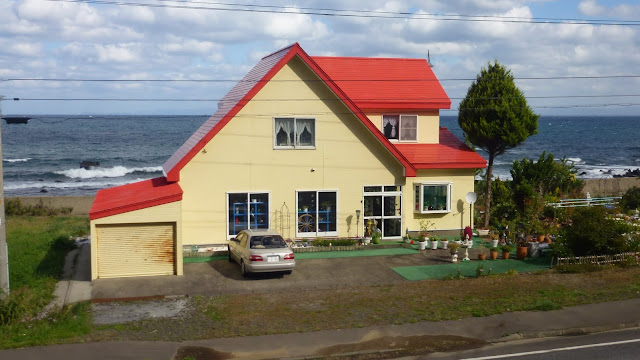


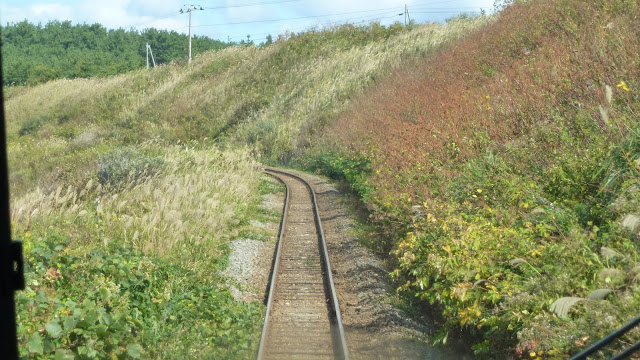








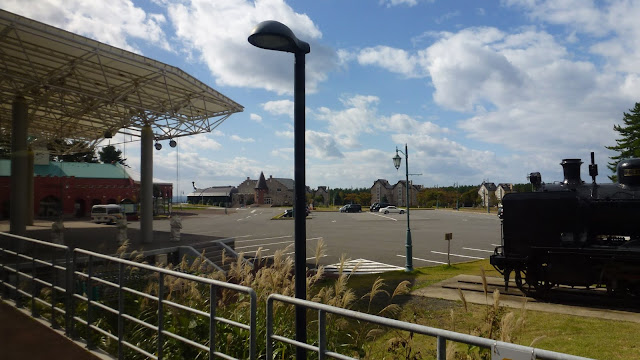

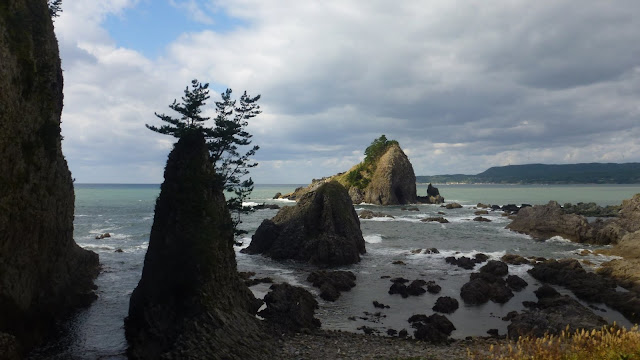


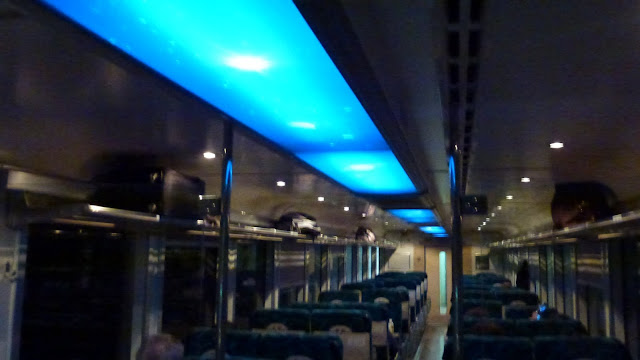

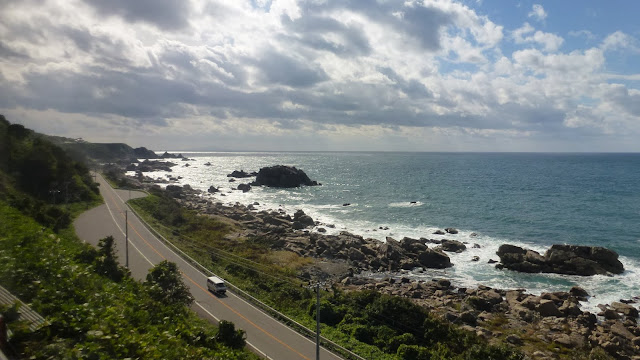




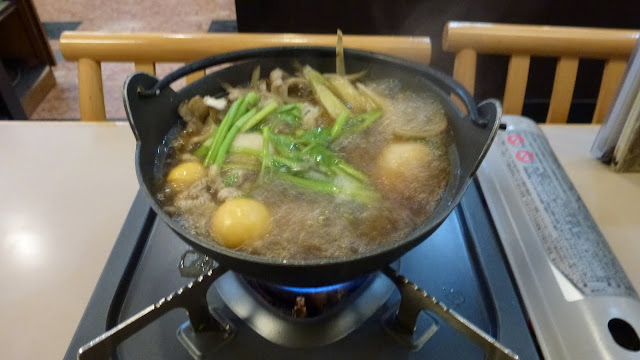
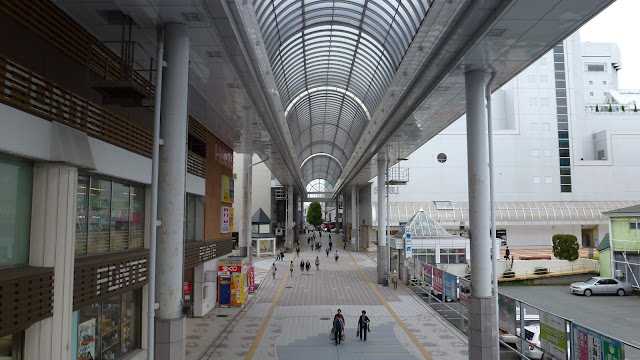
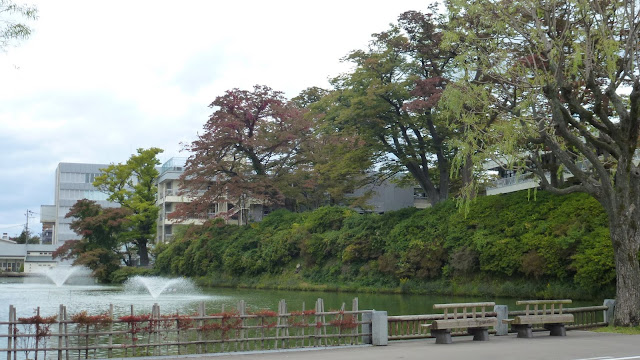






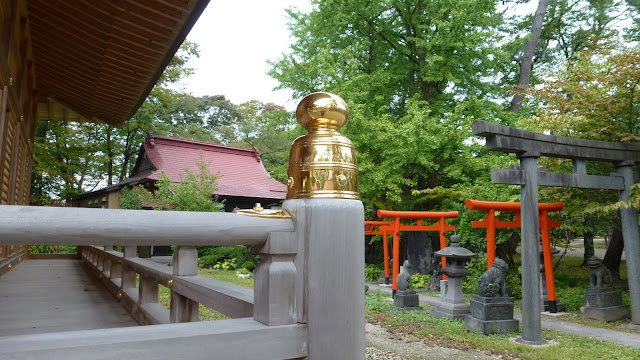










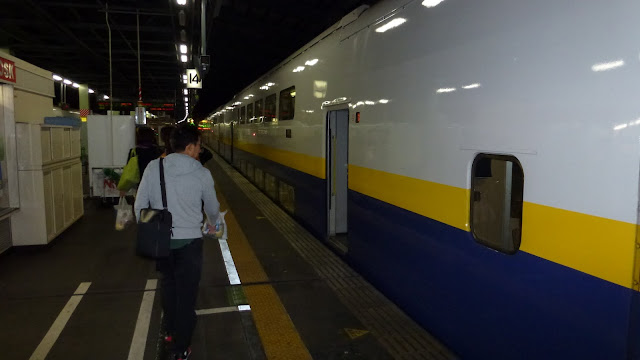

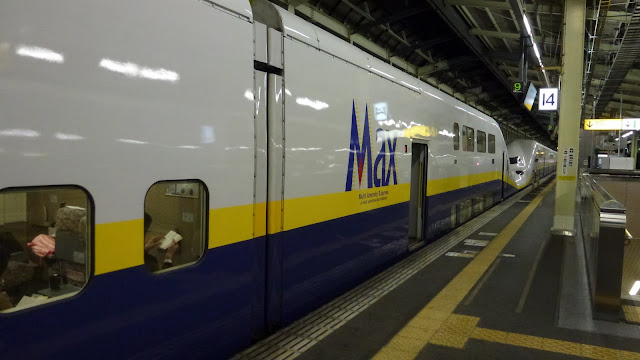



Comments